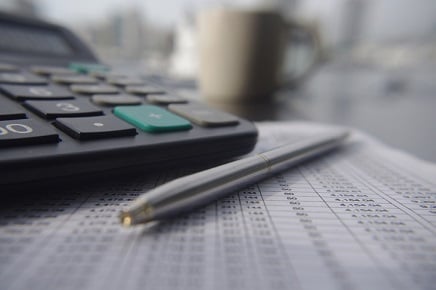Will rates rise or fall? Let it float or lock? What should you do today?

Seems like rates are all over the place with predictions awash. Interest rates are driven primarily by future expectations of the economy along with geopolitical risks (flight to quality). What does this all mean for rates? What should you do?
What about the economy?
In general, the economy is “limping” along without the typical signs of an expansionary stage in this economy. You are also seeing banks start to tighten lending standards. In essence, inflation is not coming back to prior levels anytime soon; there is still ample capacity in the economy to avoid huge upward price pressures.
How will geopolitical risks play in?
What should you do today?
In the short term look for rates to rise a little bit in the next year or so as the Fed tightens. I don’t think they will rise by much with the geopolitical risks and the tepid recovery. What I’m advising clients to do is a short-term lock around 3 or 5 years as rates are still historically low. This will give you the opportunity to not worry about the short-term bump in rates and also be able to take advantage of lower rates when they fall again. Personally, I bought a house a little over a year ago and did a 7/1 (fixed for 7 and then floats) and was able to lock in at 2.5%. My plan is to wait for the next cycle and then refinance at a low rate into a 15-year fixed or depending on the economy I might just let it float forever
What about the economy?
- Labor market is giving mixed signals: We are almost at “full employment” in the economy but the “participation rate” has dropped and there is limited wage growth. In an economic expansion, historically more works would reenter the labor market and increase the participation rate. There would also typically be wage growth as the labor market tightened. Neither are occurring in this market.
- Inflation: In economic expansions, inflation picks up driving up costs. Inflation has been negligible for this expansion. The inflation numbers have been tepid due to lack of wage growth and also commodity prices. One of the largest drivers of inflation is commodity prices. Oil continues to languish and therefore gas for driving, heating, electricity, etc., has continued to remain cheap
- Yields: Initially after the Trump election, yields jumped with a bit on economic expansion. Yields have since returned to historically low levels driving rates down once again
In general, the economy is “limping” along without the typical signs of an expansionary stage in this economy. You are also seeing banks start to tighten lending standards. In essence, inflation is not coming back to prior levels anytime soon; there is still ample capacity in the economy to avoid huge upward price pressures.
How will geopolitical risks play in?
- The “Trump factor”: The president’s economic agenda seems to be getting bogged down by Russia. There were huge expectations that the current president’s policies would lead to much faster economic expansion. This doesn’t appear to be happening with the focus on Russia, the FBI probe, etc.
- Terror attacks in Europe: Whenever terror strikes there is a demand by investors for “safer assets”. One of the leaders of safe assets has been US treasuries. As there is more demand for US treasuries, prices rise and yields fall (remember they act in inverse). As yields fall rates also fall.
- Middle East: Although the area continues to pose geopolitical risks, the impact should be muted. With the world awash in oil reserves, it is doubtful this risk will have lasting economic impacts.
What should you do today?
In the short term look for rates to rise a little bit in the next year or so as the Fed tightens. I don’t think they will rise by much with the geopolitical risks and the tepid recovery. What I’m advising clients to do is a short-term lock around 3 or 5 years as rates are still historically low. This will give you the opportunity to not worry about the short-term bump in rates and also be able to take advantage of lower rates when they fall again. Personally, I bought a house a little over a year ago and did a 7/1 (fixed for 7 and then floats) and was able to lock in at 2.5%. My plan is to wait for the next cycle and then refinance at a low rate into a 15-year fixed or depending on the economy I might just let it float forever



